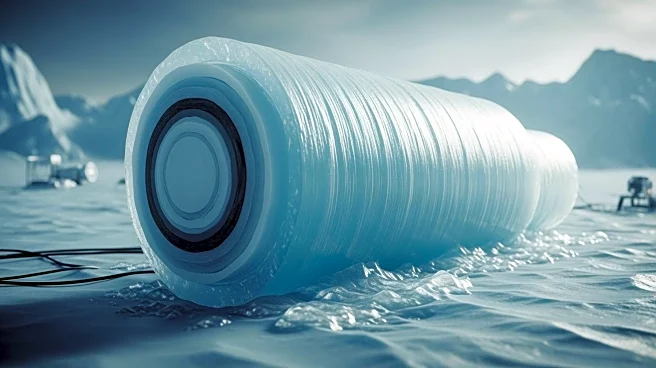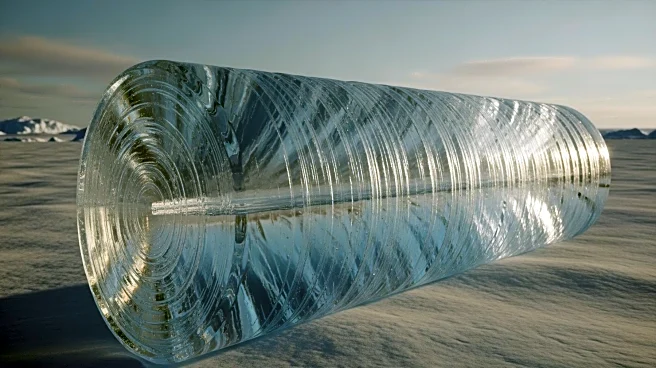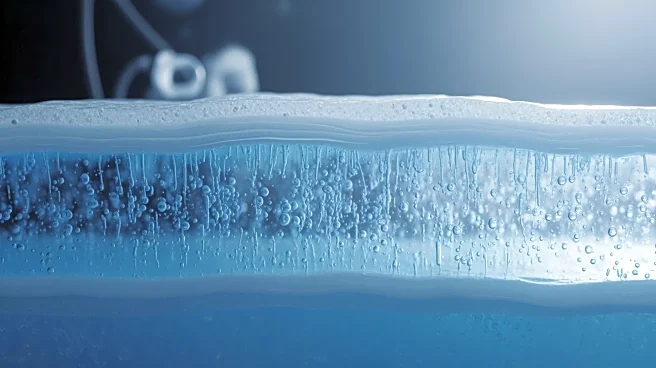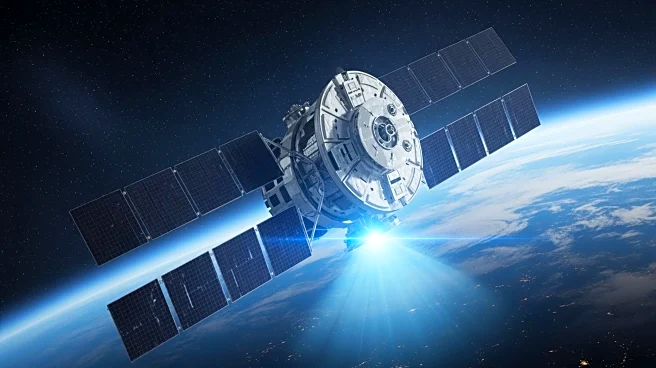What's Happening?
Scientists from the Center for Oldest Ice Exploration (COLDEX) have collected ice cores from East Antarctica that are 6 million years old. These cores contain air bubbles that provide a glimpse into Earth's ancient climate, revealing a period when the planet
was warmer and sea levels were higher. The research, led by Sarah Shackleton and John Higgins, has uncovered evidence of a long-term cooling period during the Pliocene era. The team plans to continue studying these samples to further understand climate change and atmospheric conditions.
Why It's Important?
This discovery provides valuable data on Earth's climatic history, which is crucial for understanding current climate change trends. The findings could help scientists predict future climate scenarios and inform policy decisions related to environmental conservation and climate mitigation. The research also highlights the importance of Antarctic ice as a natural archive of Earth's climate history.
What's Next?
The research team plans to conduct further studies between 2026 and 2031 to extend the climate records even further. This will involve drilling more ice cores in the Allan Hills region to uncover additional ancient ice. The ongoing analysis of these samples will focus on reconstructing levels of atmospheric greenhouse gases and ocean heat, providing deeper insights into historical climate patterns.
Beyond the Headlines
The ethical implications of climate research are significant, as the data can influence global environmental policies and conservation efforts. Understanding ancient climate patterns can also shed light on the natural variability of Earth's climate system, offering a broader perspective on human-induced climate change.















